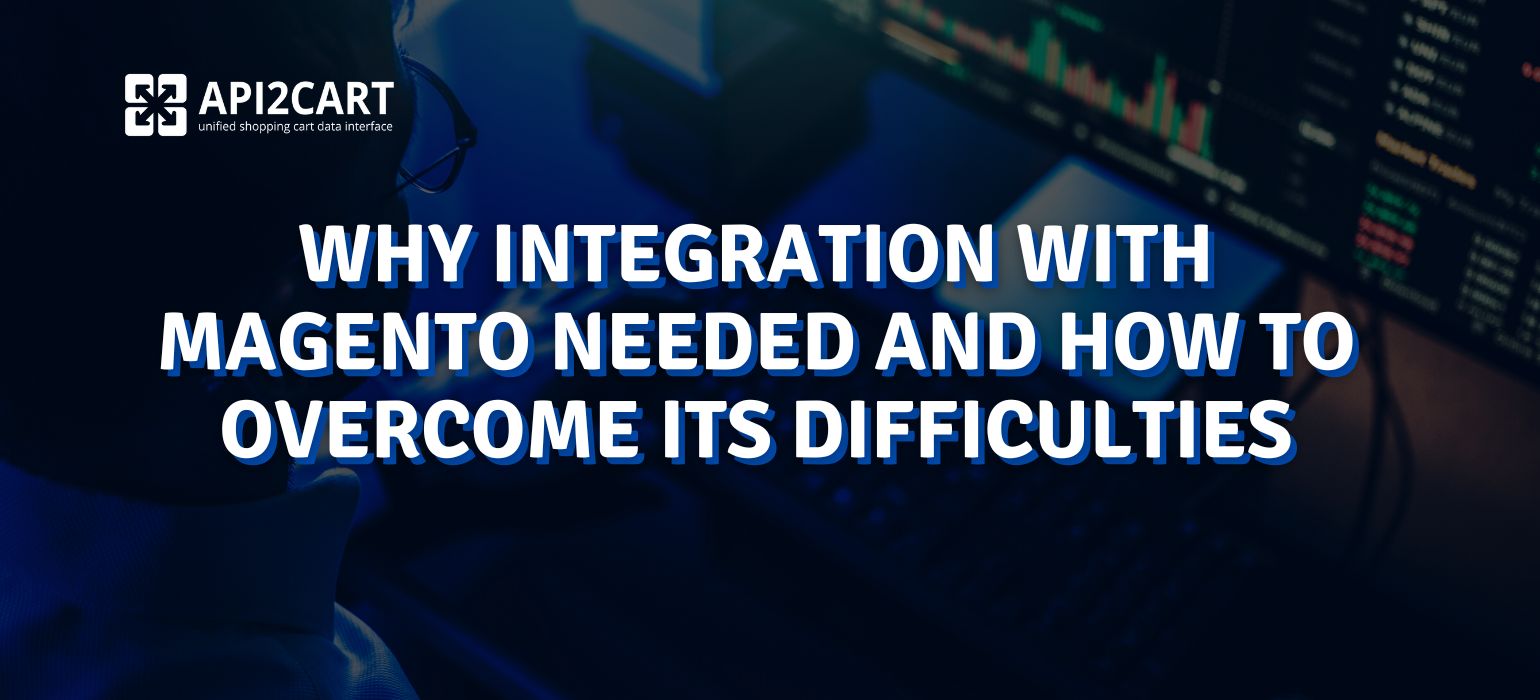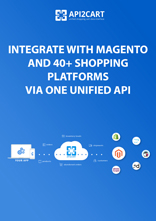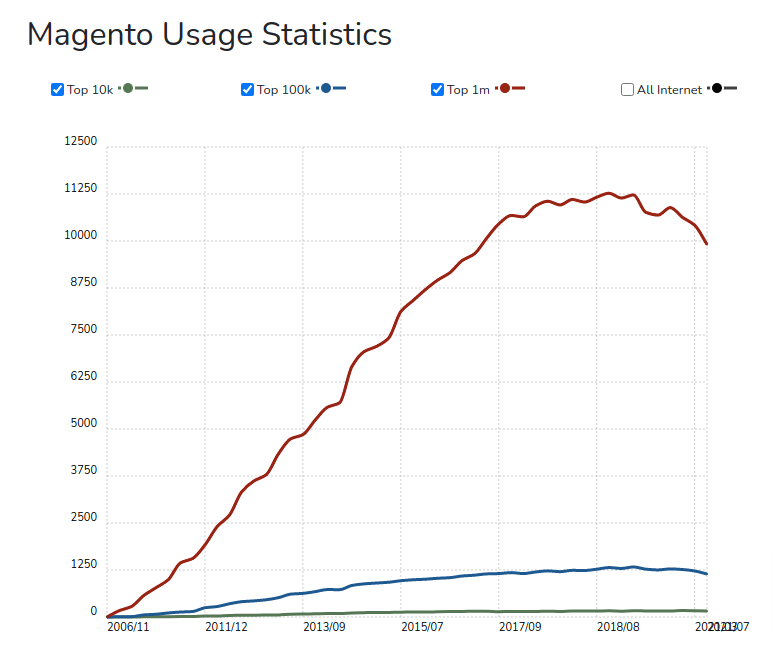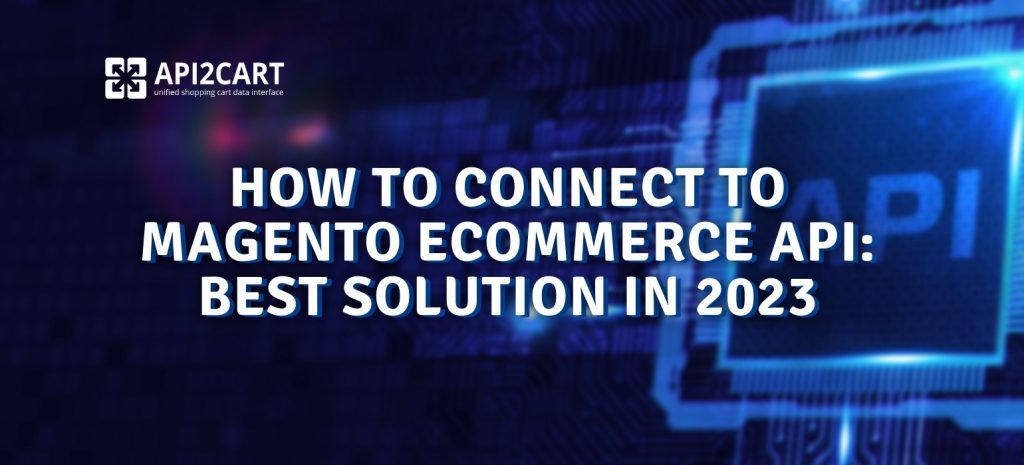
More and more software providers and developers are interested in the building of Magento integration in 2024. Access to Magento e-stores' data allows the software owners to propose their solutions to this shopping platform's clients.
Magento is one of the biggest and famous shopping cart solutions. It has stood the test of time and competition. Magento is on the list of industry leaders powering over 12% of all online stores worldwide. It equals 250,000 active users. This shopping cart solution is downloaded approximately 5,000 times every day.
The connection to Magento can bring a wide variety of advantages and possibilities. In this article, we are going to explore them. Moreover, you will have a chance to find out more about all the difficulties related to Magento integrations.
What is Magento Integration?
Magento integration means the process of tying any software like shipping management, order management, marketing automation, dropshipping automation, etc. with this platform's API. It allows communicating with the Magento system and getting access to the necessary data from Magento e-stores.
Magento is an intricate platform that does many things in its own way. It is programmed on the basis of the Model View Controller (MVC) approach and requires the best web programming expertise and skills. For these reasons and others, Magento is not easy to work with.

Magento Integration via API2Cart
Explore how Magento integration can help your business become more competitive.
Why To Develop the Magento integration?
Plenty of shopping platforms are on the market, and Magento is among the leaders in terms of popularity. According to Builtwith.com, the majority of Magento clients are in the United States (70,000+ stores). The United Kingdom has second place with 15,000 live websites. Germany has the third position with 12,000+ sites using Magento. 9 of the top 10 countries for Magento online stores are in North America and Europe. The popularity of Magento continues to increase each year.

So, integrate Magento with your software is a worthwhile investment for your business. That is because all its customers automatically become your potential clients after the connection development. Moreover, you will have a chance to increase your market share a lot.
Also, the connection to Magento API allows getting access to the data on orders, products, customers, shipments, taxes, etc. Without such kind of info retrieved from e-stores, various software and applications can not perform their main functions.
However, integration development isn’t easy. It is a long and tedious process that requires significant money, effort, and time investments. Among the integration challenges are finding an experienced developer, waiting a few weeks, paying a few thousand dollars per integration. Furthermore, after a connection is ready, there is a need to maintain and upgrade it, which also entails expenses.
So, let’s take a deep breath and try to figure out why Magento integration might become a serious challenge.
Developer Requirements
First of all, good Magento developers are rare, and thus it would be hard for software owners to find an experienced one to do the integration part. The reason is that those, who haven’t worked much with genuinely object-oriented, quality enterprise frameworks like Magento, would meet many challenges and need to put a lot of effort not to stuck. It would be much easier to work with the platform for those PHP developers who have used such serious frameworks like Zend or CakePHP previously. Nevertheless, it would also require much time to elaborate the integration module and wouldn’t be done without any headaches. Hence, such a developer’s work would cost thousands of dollars per month.
Now let’s dwell on why even experienced developers don’t like to work with Magento and why its architecture is so scary for those who are just beginning their acquaintance with the platform.
Magento Anatomy
Most eCommerce solutions use one database table that contains info on products, another one shows info on categories, and the third one connects them with each other. Instead of this, Magento has an EAV (Entity-Attribute-Value) database model and uses over 40 various tables with info on products and categories. Complexity is not the only minus of this model. It also causes at low speed as a result of SQL query complexity.
Another disadvantage of the Magento structure lies within how it processes the import. After pushing the “import button”, technically it has to already occur. But if to look at the info contained at imporexport_importdata, we will find the data from the file that was just validated. It is a result that when we validate the file, the platform process and put its data into this table for quick access to the real import, and this table is erased before it runs through the file. Therefore, errors might happen because of the way Magento validates the data.
Common Issues During the Developing Integration with Magento
- Some objects are supposed to be returned in an array format. But if there is only one item, it returns as a single item rather than in an array. So, you might need to add a function that would check if the info is in an array format, and if it’s not, transform it into the one.
- Other issues will wait for you when you send information to Magento. For example, when you sending hash objects to the platform, and the key contains an underscore inside its name, you’ll need to contain that key inside two quotation marks. Sounds pretty easy, but to find such little tricks will get much of your time.
- Another challenge is the accuracy of API docs. Sometimes it isn’t correct. For instance, when creating a product with the help of the API, you will need to specify the websites to which it is to be assigned. The documentation mentions a parameter - website of type ArrayOfString that is supposed to contain this info. But if you send it in such a way, you won’t be successful because the parameter key has to be website_ids, which must be an array of arrays format that contains the website id info.
- The problem with the reindexing process is the next one. When you try to reindex from the platform admin panel, not all the options are reindexing, and there might occur product flat data, category flat data and product prices reindex errors.
- The last thing that might cause a problem is that the default values in Magento are not stored in the database or in the system.xml files used to configure the interface. Therefore, module developers need to add a <default/> node to the global configuration tree via the module’s config.xml file. Hence, values stored here become the default and the core_config_data table only stores those that are distinctly set, together with a scope they are set at (default, website, or store).
How to Connect to Magento API Easily?
So, integration development is an expensive and technically complex process. But there is a way to avoid these difficulties. API2Cart is a service that makes multiple integrations way too easier for software vendors, wishing to want to integrate with Magento and/or with other leading shopping carts. It provides a unified API for multiple shopping cart solutions including Magento.
Multiple integrations via API2Cart are one of the most effective ways to make your software more successful. All you need to do is integrate with API2Cart instead of elaborating on many connections separately.
API2Cart provides more than 100 API methods that allow your software to do various operations. They include to retrieve, add, update and sync all the needed data from Magento e-stores. You will be able to easily manage the info related to products, orders, prices, shipments, taxes and customers.
Summing Up
To resume all the above-mentioned, if you’re a software provider like order and inventory management, shipping management, WMS, ERP, repricing, marketing automation, you’ll need to spend much time and pay a lot to perform Magento integration. Fortunately, there is an alternative to this complex and time-consuming way to connect to Magento that you might be interested in.
API2Cart is a service that can help you to avoid much of this unpleasant experience. It supports the integration with 40+ popular platforms and marketplaces. Thanks to its unified API, it enables you to connect not only to Magento but also with all of these platforms via one integration. Among these eCommerce solutions are such as BigCommerce, WooCommerce, Shopify, PrestaShop, 3dcart, Amazon,eBay, etc.

So, consider the possibility of enhancing your business by using API2Cart as one of the best Magento integrations services and get a connection to 40 other shopping platforms as a bonus. In case need more information, feel free to schedule a FREE consultation with our expert and discuss the details related to integration with Magento.



